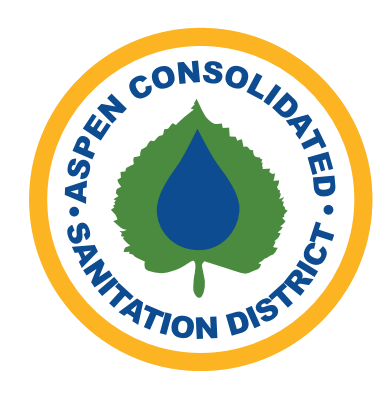Treatment Facility
Wastewater Treatment Facility Overview
Primary Treatment
Physical processes are the first step in wastewater treatment. This means material is physically removed from the waste stream.
- Raw sewage (influent) passes through SCREENS, which are metal filters immersed in the incoming flow to separate objects such as dental floss, rags, wipes, plastic, sticks, etc. from the wastewater. These objects should not have been flushed or disposed of into the collection system and must be removed to protect pumps and other mechanical equipment in the facility.
- After the wastewater passes through the screens, it enters a large settling tank, called a GRIT CHAMBER. The influent is slowed to a specific speed to allow inorganic material (sand and gravel) to settle to the bottom, while the organic waste stays in suspension and continues into the facility. The solids that sink to the bottom of the grit chamber are removed from the treatment process, and taken to the landfill.
- INFLUENT FLOW EQUALIZATION is used to create a loading buffer on the treatment facility by diverting some of the incoming wastewater during the day, when flows are high, to holding tanks then pumped back into the facility at night, when flows are low.
Secondary Treatment
The use of biological processes to provide further treatment is referred to as secondary treatment.
- Bioreactor tanks create an environment for beneficial/helpful microorganisms (mostly bacteria) to grow, consume organic waste, and reproduce; these bacteria provide a biomass to continuously treat the wastewater.
- The microbes used in the biological treatment process are naturally occurring, often found in soil.
- Large blowers push air into the Bioreactors. The process of using microbes to consume organic waste in an oxygen-rich environment is called ACTIVATED SLUDGE. These microbes require oxygen to live and thrive, just like many other living organisms.
- The bioreactors are also used to biologically remove the nutrient NITROGEN from the waste-stream. The air is turned off at specific intervals to create an anoxic (lacking oxygen) environment. This process of biological nitrogen removal is known as denitrification and it forces bacteria to use ammonia as an energy source when no oxygen is present. Denitrification requires that nitrogen (as ammonia) is first converted to nitrate, which occurs in the aerobic treatment interval. Then nitrified water is exposed to the anoxic environment. Bacteria in this anoxic phase use the nitrate as an electron acceptor in a process called Reduction. This causes the release of nitrogen in the form of nitrogen oxides or nitrogen gas into the air.
- After leaving the Bioreactors, the microbes and treated wastewater mixture flows to the SECONDARY CLARIFIERS. In this circular tank the hungry microbes sink to the bottom and are pumped back to the bioreactors to consume more food (organic waste). The treated water flows to the final treatment process.
Tertiary Treatment – The final steps taken before releasing the treated water into the Roaring Fork River.
- The water flows by gravity from the secondary clarifiers to a CLOTH MEDIA FILTRATION System. Inlet wastewater from the clarifiers enters the tank then passes through the cloth media by gravity where it continues onto the next step.
- The water flows by gravity from the secondary clarifiers to a CLOTH MEDIA FILTRATION System. Inlet wastewater from the clarifiers enters the tank then passes through a 5 micron cloth media. Particles larger than 5 microns are trapped in the media. For comparison, a human red blood cell is about 5 microns in size. The clean and clear water continues to the next step.
- ULTRAVIOLET RADIATION is the final step in treating the wastewater before it enters the receiving stream. Ultraviolet (UV) light is a disinfection method that uses UV light to destroy the nucleic acids in the microbes’ DNA, leaving them unable to perform cellular functions or reproduce.
- The treated, environmentally safe, water (effluent) meets or exceeds all the standards set by the state of Colorado Water Quality Control Division and the Environmental Protection Agency Clean Water Act and is discharged into the Roaring Fork River.
Sludge Processing – The microbes used to treat the organic waste in the bioreactors are constantly multiplying. To control the quantity of those microbes there must be a regular removal of sludge from the system.
- A percentage of the treatment facilities microbes are sent to DIGESTERS daily. In digesters, microbes break-down (digest) each other since there is no other food source present. This process reduces the volume of sludge and pathogens present.
- The digested sludge is then pumped to HIGH SPEED DEWATERING CENTRIFUGES, which spin the water out of the sludge and send the thickened sludge to a dump truck.
- The dump truck hauls the sludge to the Pitkin County Landfill, where it is composted with wood-chips, landscaping waste, and food waste.
Odor Control – There are two biological odor control systems at the treatment facility.
During the different phases of wastewater treatment, various gases such as hydrogen sulfide, reduced sulfur compounds, and ammonia are released. These compounds can be extremely odorous and in high concentrations pose potential health risks. The odor control systems at the facility use bacteria to remove and destroy the odor-causing compounds, resulting in cleaner air for the surrounding community.
Our Treatment Facility is headed by Nathan Nelson.
Questions regarding the treatment plant may be submitted using the following form.
